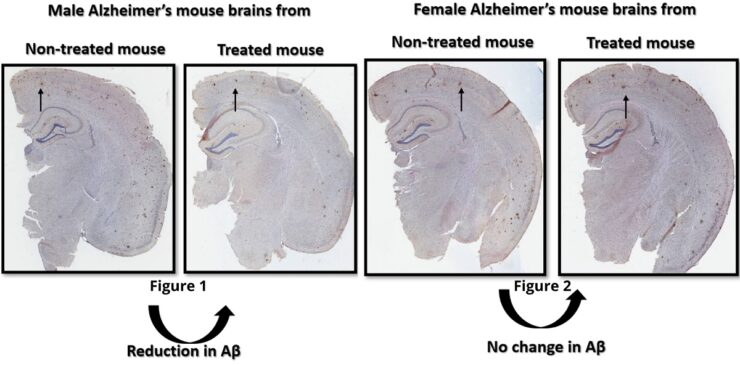TREATMENT FOR ALZHEIMER’S DISEASE STUDY IS SEX-SPECIFIC
A recent study conducted at the University of Ottawa found that men and women respond differently to Alzheimer’s disease (AD) treatment.
The study was published on Dec. 15, 2020, and it was led by Dr. Khaled Abd-Elrahman, a licensed pharmacist.
According to the Alzheimer Society of Canada’s 2018-2019 Impact Report, “25,000 new cases of dementia [including Alzheimer’s] are diagnosed every year.” The report also states that “more than 1 million Canadians have some sort of connection” to, “Alzheimer’s disease and other dementias.”
Dr. Ebd-Elrahman said, “in our research, we evaluated male and female mice with AD. We wanted to see if their memory improved after we injected a drug to block a receptor in the brain that controls memory.”
While researchers tested the drug on mice for this study, the drug previously “passed safety trials on human beings.” Meaning, “if the study had a positive result, the chances of getting this treatment into a clinic was high. So this was a very desirable drug to test for AD treatment.”
However, while the drug reverses memory loss in male mice, it does not do the same in female mice.
“We need to identify the differences between the mechanisms that cause AD in males and females [respectively] to come up with effective AD treatment,” said Dr. Abd-Elrahman. “The same evidence that we saw in how mice respond to AD treatment is also observable in human brains.”
“Once we understand these [gender] differences, we can develop strategies to treat AD.”
Senior author of the study, Dr. Stephen Ferguson, is a researcher in the department of psychiatry at the University of Ottawa. And initially, he did not expect to see differences in how males and females responded to AD treatment.
Dr. Ferguson says “we see fundamental differences with how the treatment interacts with the receptor in male and female brains. This blows my mind. And, frankly, it pisses me off.”
He hoped this study was a turning-point in AD treatment.
“We really thought that we found an AD treatment that could help both men and women,” said Dr. Ferguson.
He emphasizes that it is important to push forward with research to help women with AD.
“Women make-up two thirds of the Alzheimer’s population. And this statistic is adjusted for the survivability rates of the disease”, said Dr. Ferguson.
While it is Dr. Ferguson’s goal is to find a cure for both male and female AD patients, advancements in these pharmacological studies take time. Especially since there is so much to learn about how male and female brains differ.
“[There are] profound differences in how individual proteins regulate neurone to neurone communication that allow for the formation of memories in males and females,” said Dr. Ferguson.
He compares this to the mechanisms by which men and women feel pain.
“Males and females experience […] pain in the same way. But the mechanisms by which those signals are transmitted through the spinal cord are completely different.”
So, like AD, the outcome is the same for both genders, but the mechanisms that determine the development of AD is different in males and females.
Dr. Ferguson has a personal connection to this research. During the interview, he reflected on how the disease impacted his grandfather.
“When I was a teenager, my grandpa often went for walks and got lost. When this happened, my grandma would call me in a panic, and I’d get on my bike to race around town until I found my grandpa,” he said. “And within five minutes of walking him home, he was completely unaware that he’d gone for a walk.”
“I don’t think there are many people in Canada who have not had someone in their family affected by AD.”







